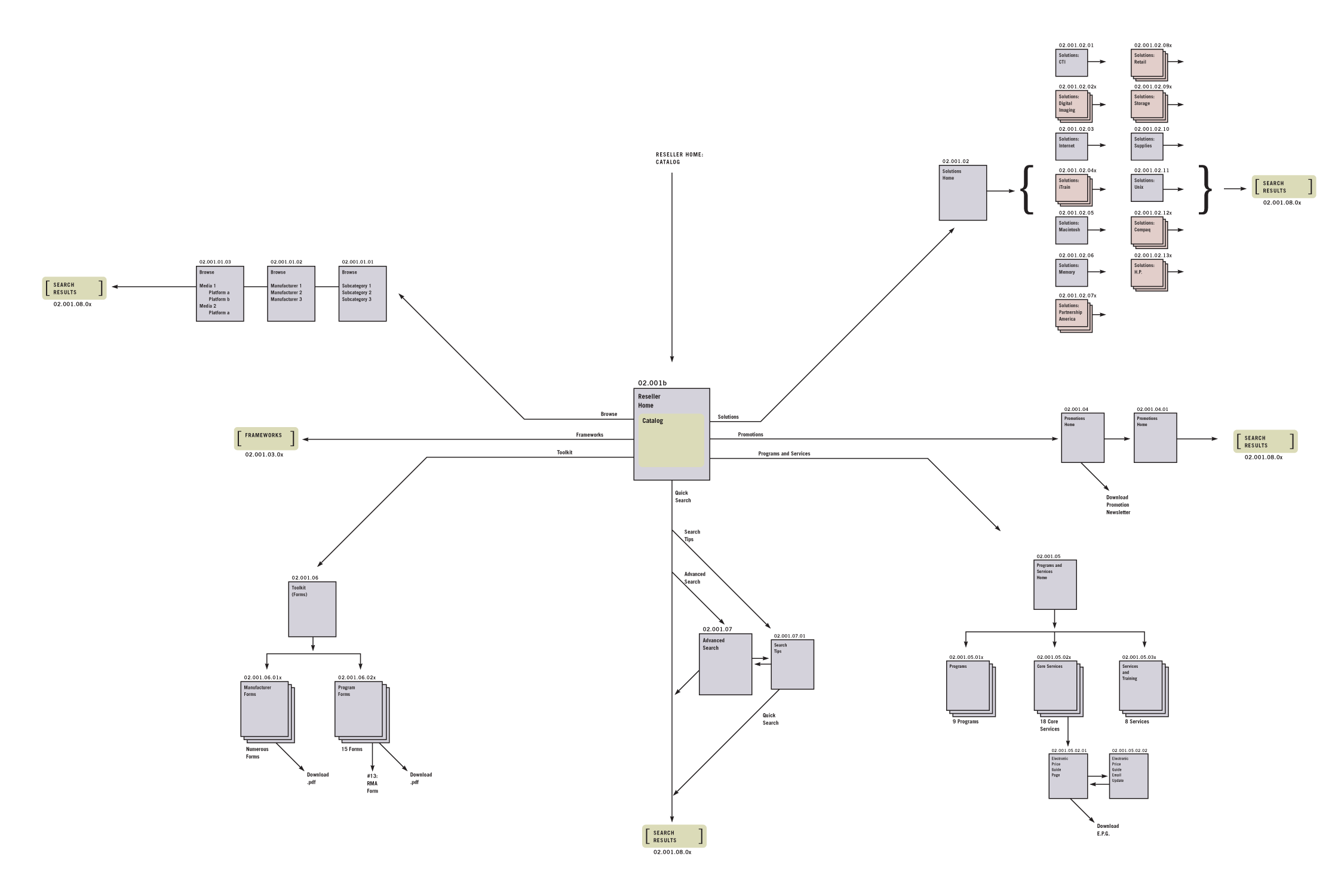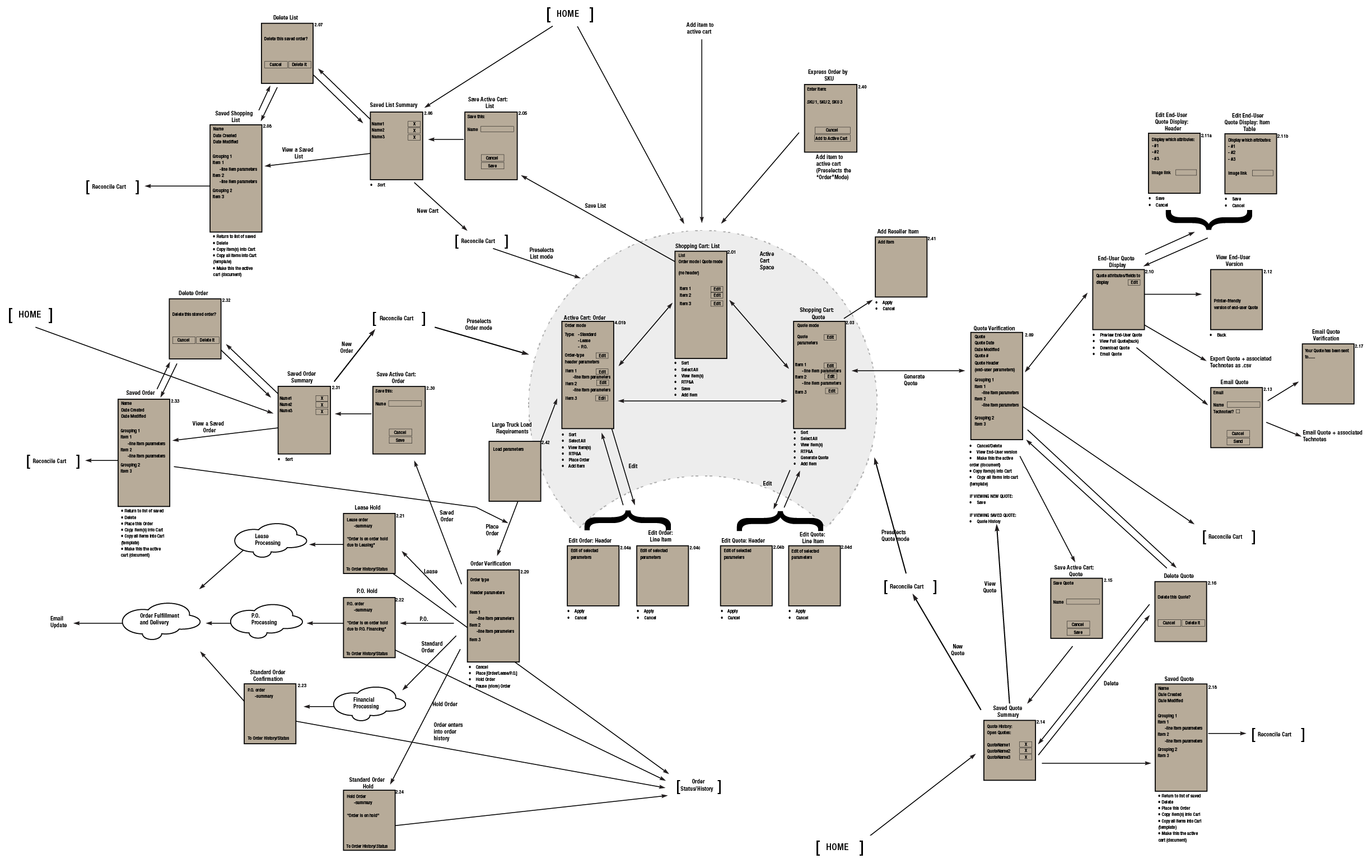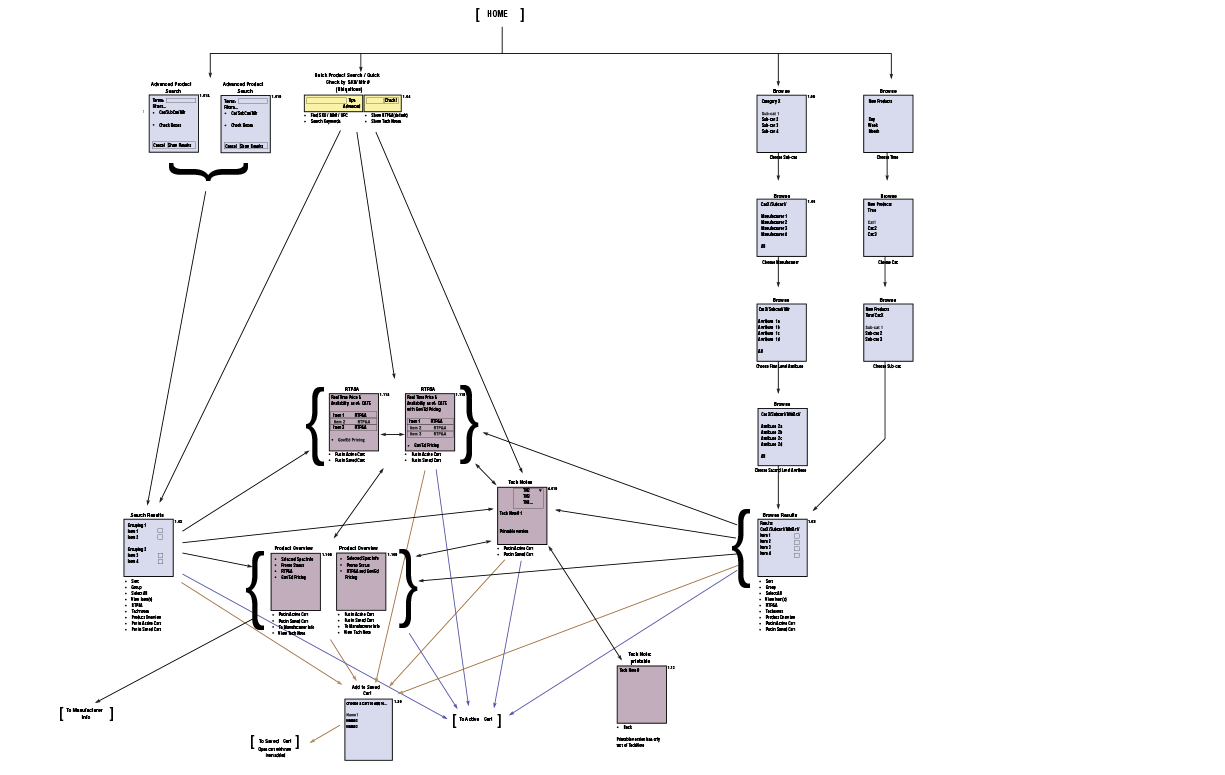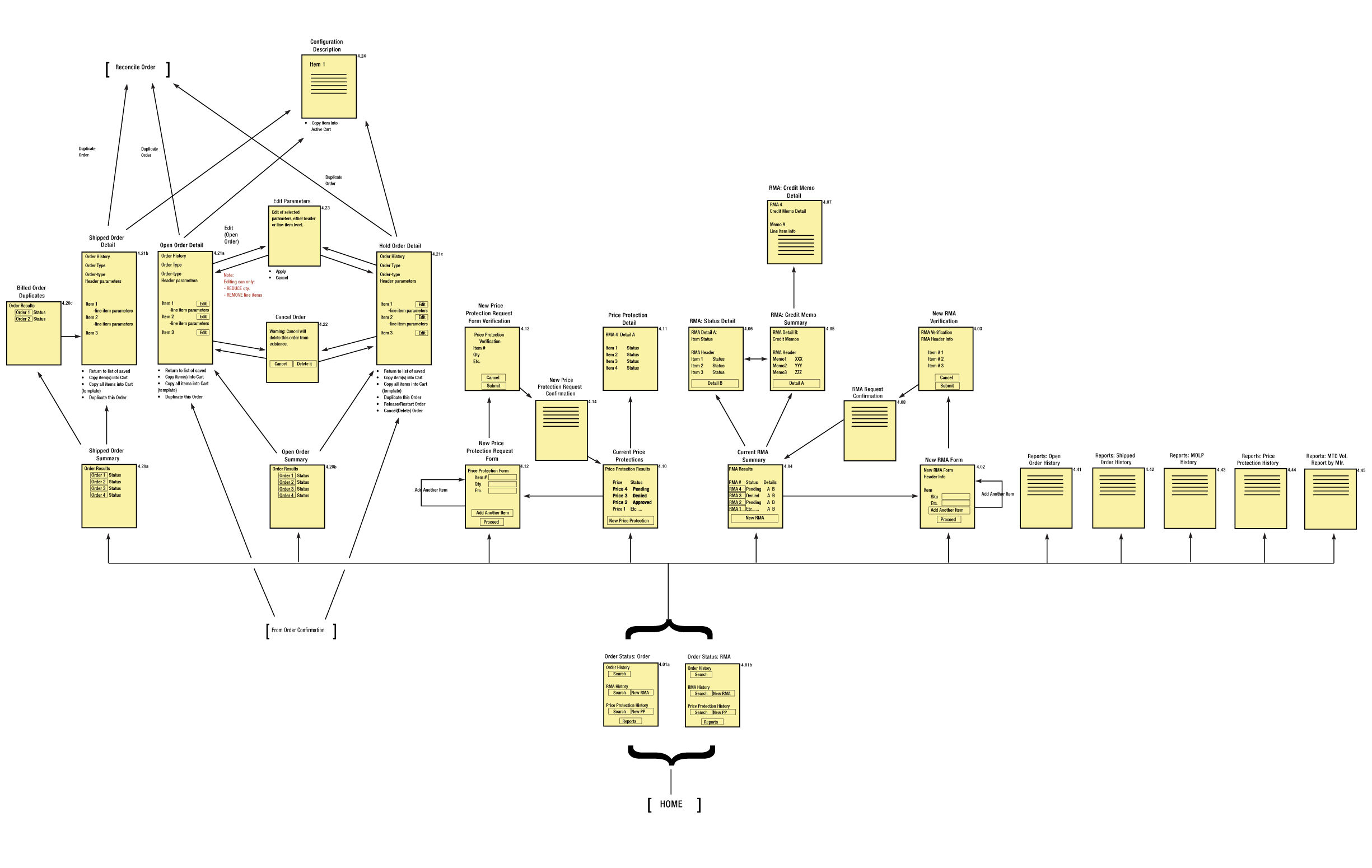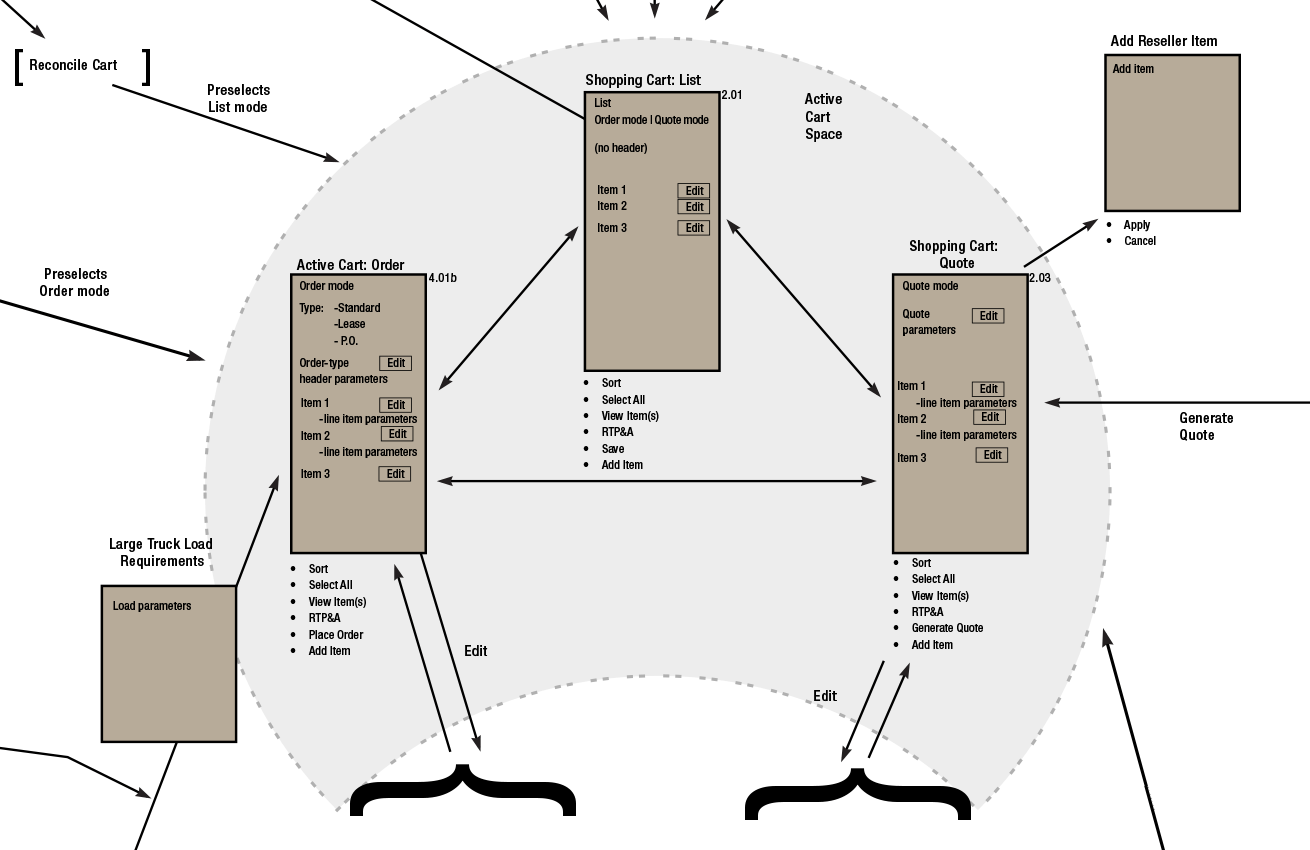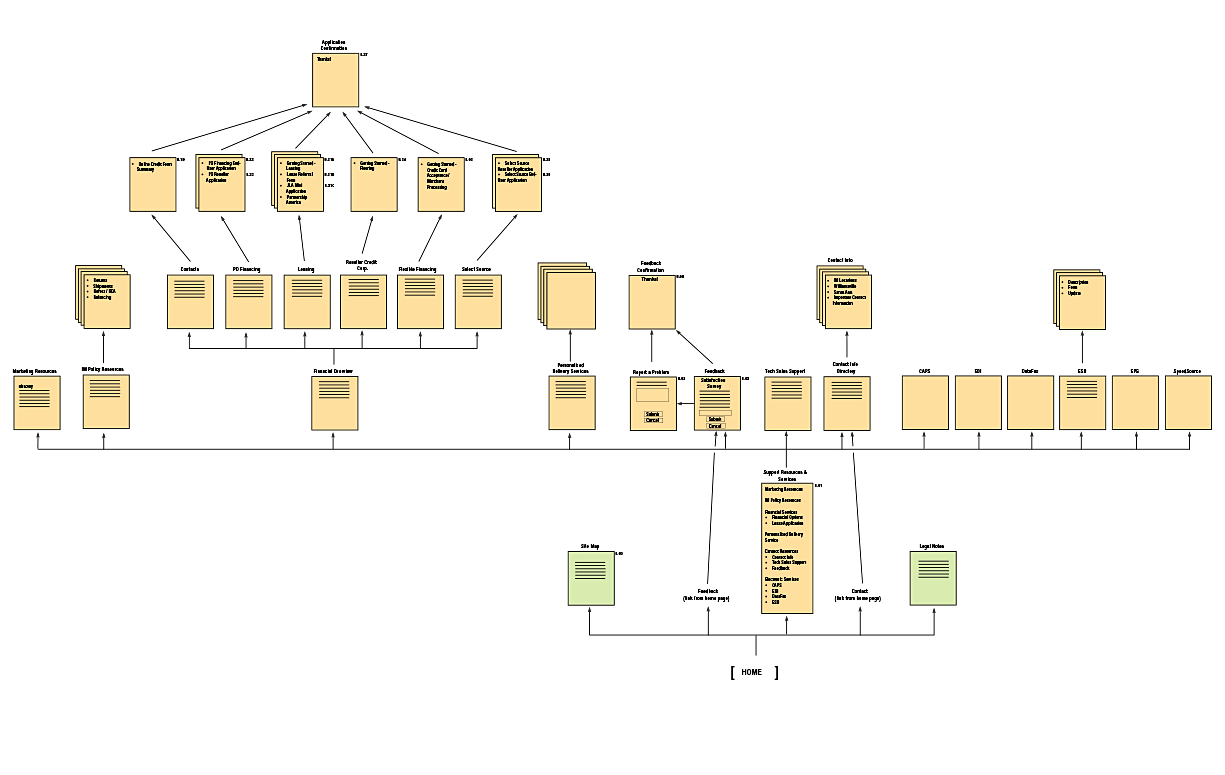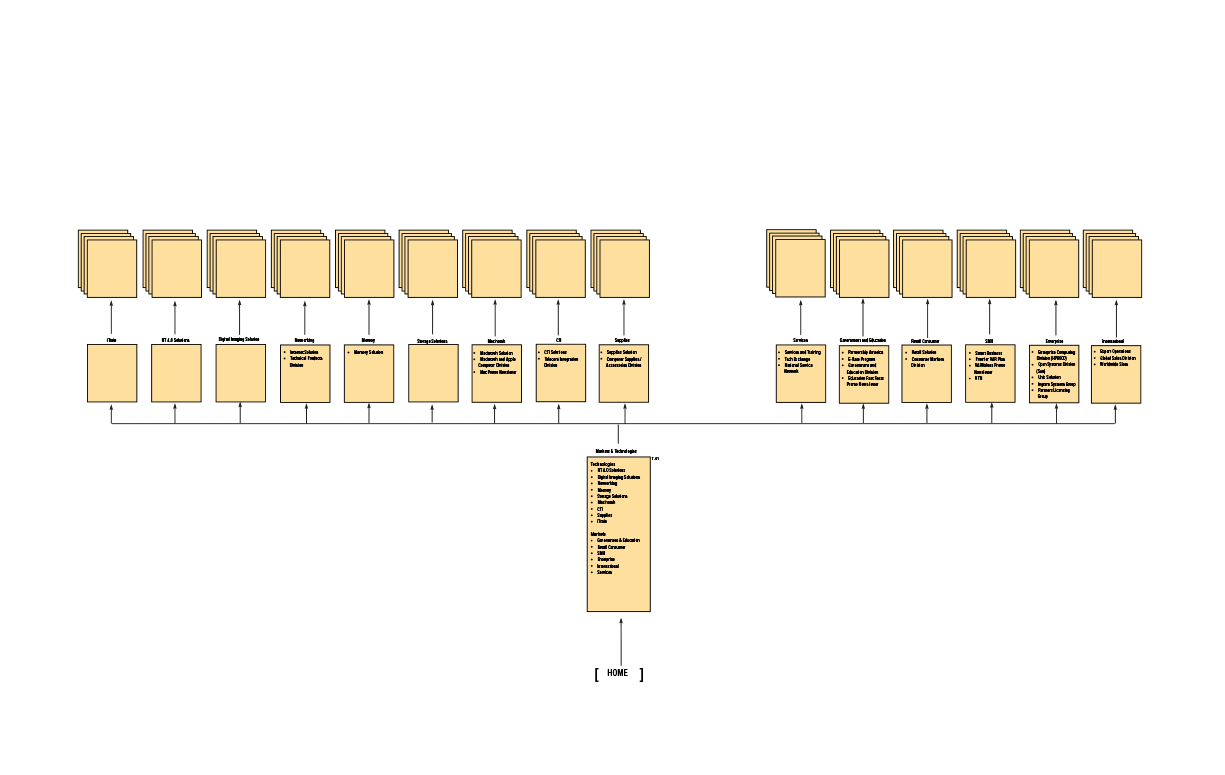Complete redesign of the Ingram business-to-business e-commerce marketplace. The new system is tailored to the complex requirements of procurement.
Project Background
Ingram Micro is the world’s largest wholesaler of IT products and services (by transaction volume).
Ingram Micro’s entire commerce chain was managed by a mainframe system that had been developed more than ten years previously, and their e-commerce site behavior was a combination of how the mainframe operated and how phone orders were processed (via a “green screen” terminal application). The end-user experience of the site had not been a consideration.
Not surprisingly, customer feedback about the site (collected by the design team at the start of the project) was consistently and mainly negative. Issues ranged from lack of 24-hour availability — the mainframe went down every evening for maintenance, so the site also went down — to the absence of any meaningful search functionality. Ingram themselves recognized that they needed to update their business and deliver a better marketplace experience in order to address the competitive pressures and market expectations.
Working with KPMG (for business change management) and an independent software development firm (for engineering of the new system), the Studio Verso product design team defined the design requirements and delivered a new user experience over the course of the multi-phase project.
Project Results
Before the redesign, Ingram Micro had 31,000 visitors a month on their e-commerce site, and only 2% of their total orders were from the web. Web revenue was less than 1% of total revenue. Phone orders were increasing.
Within a year of the redesign, Ingram Micro could declare a turnaround in their business. Site traffic increased 850%, phone orders decreased, and web revenue increased 46%, marking the start of a multi-year growth curve.
Project Roles
As Senior Interaction Designer at Verso and lead for the Ingram Micro project, I created the entire interaction and information architecture of the new commerce system, designed the pages themselves, and worked with our development team to deliver the production code for the new site.
A Shopping System for Business Needs
Unlike e-commerce for consumers, e-commerce for resellers, business-to-business companies, and government orders have complex business processes and procurement requirements that Ingram Micro had to satisfy in order to complete a sale. These included:
- Queue orders 24x7
- Create, save, and reuse an order
- Create quote requests
- Manipulate orders by line item
- Hold orders for 48 hours
- Tax handling for multiple states
- Integrated freight carriers
- RMA orders
- Backorders
- Mixed resale and auction orders
- Custom component assembly (white boxing)
The Design Architecture
The first step to address these requirements was to design a new coarse-grained comprehensive site structure that scoped out locations for the most important user scenario pages and their relationships to all the known functional areas and site content. The essential pages were:
- Site home
- User home
- Catalog front page
- Product page
- Search results
- Build-to-order front page
- Your account
- Order
This mapped out the basic outline for the new site and established the architectural framework into which the details could be assembled.
The next iteration delved deeply into the crucial flows for product browsing, order reconciliation, and, arguably the most important experience, the order process.
Detail: the Cart
At the center of the e-commerce system is the shopping cart. Analyzing the functional requirements in context of user activity led to the recognition that the essence of the shopping cart was the list of products in the cart. User mental models separated “making my shopping cart” from “ordering,” which meant that people compartmentalized the activity of first selecting products and assembling their “shopping list” from the subsequent ordering process where purchasing could happen in a number of different ways.
A new shopping cart concept delivered a user-centric solution.
One Cart, Multiple Shapes
The differentiating innovation for the Ingram Micro design was a single shopping list that could be used for different actions by transitioning between multiple states:
- A saved cart (a list of items)
- A quote request
- An active order with checkout
In addition, the same list could be used post-order, such as when initiating an RMA process.
Once the cart was designed, the rest of the system fell into place.
Information Architecture
The project also included reorganizing and converting the site’s support and assistance content of over 970 static HTML files into templated pages maintained by a content management system.
The e-commerce side was designed to integrate with the support and help content so that a person could navigate seamlessly and fluidly between both systems, allowing them to move from managing an order, to checking an order policy, and then directly to the information needed to change their financing arrangements.
